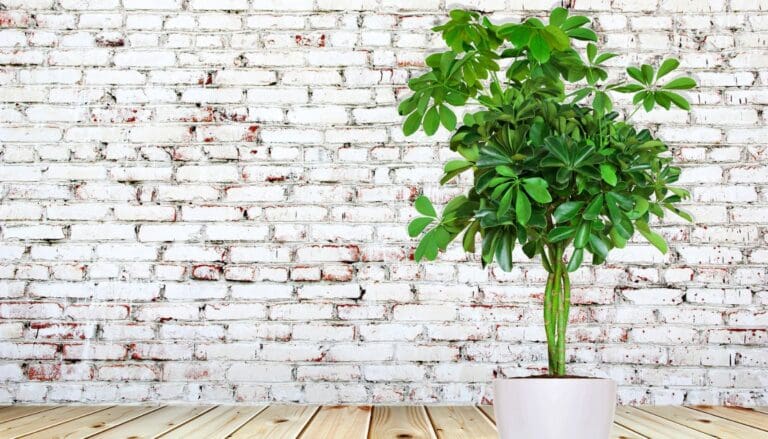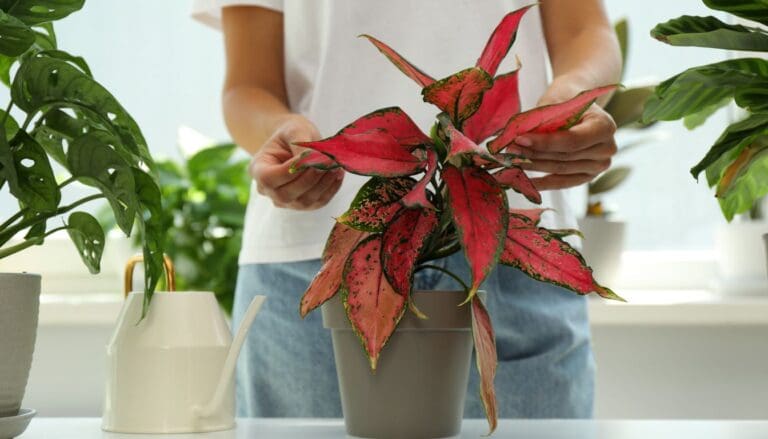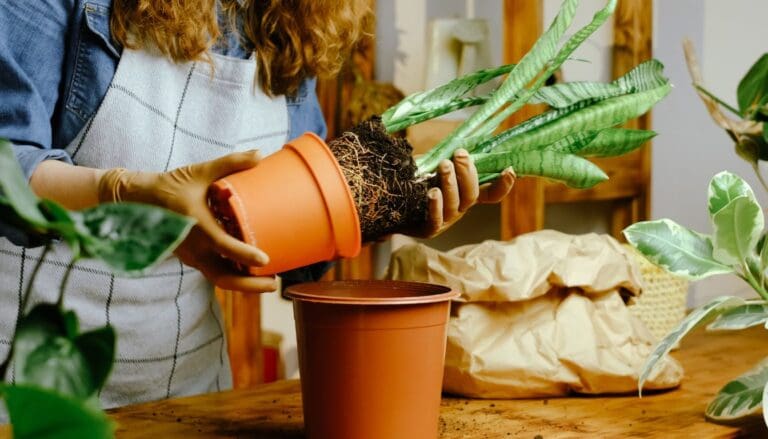How To Prune Alocasia? (Best Time+Easy Steps To Follow)
Have you ever wondered how to prune your Alocasia plant and when is the best time to do it? In this blog, we will discuss the simple steps to prune your Alocasia and the ideal time to do so.
You must prune the Alocasia at the base of the plant. If you notice damaged leaves, you must take a sterilized and sharp pruner and cut that stalk down from the base. If all the leaves are damaged, you can cut the entire plant from the base and wait for the plant to grow back.
Alocasia contains one leaf stalk; to get rid of the leaves, you need to prune the entire stalk. Pruning is important as it helps to remove the unnecessary parts and allows the plant to focus on new growth.
In this article, we will discuss the pruning of Alocasia plants in detail, so keep reading.

Please note: Simplify Plants is reader-supported. Some links in the post are affiliate links and I get a commission from purchases made through links in the post.
Why do you need to prune your Alocasia?
Growing any plant as a houseplant or in the garden will require some pruning to keep the plant healthy and improve its growth.
Prevent the plant from getting too huge.
Alocasia grows large leaves and can grow big, depending on the species you have.
If you don’t want the Alocasia to grow too big for your house or garden, you must prune it to keep it compact or reduce its size per your preference.
Shape the plant
When you don’t prune any plant, it grows out of shape as it grows from every direction.
If you don’t want your Alocasia to look out of shape, consider pruning it whenever you notice uneven growth.
Pruning the Alocasia on time will make it look good and improve the look of your interiors or garden.
Promote balanced growth
Let me explain this to you with an example.
If your Alocasia is getting more light on one side, it will grow more on that side.
But, you will notice less growth on the side that is getting less light.
Pruning helps prevent such uneven growth and maintains balance.
Also read: How Fast Do Alocasia Grow? (Alocasia Growth Rate+Growing It Faster)
Reduce crowded growth
Your Alocasia can grow crowded if you don’t prune it long.
Due to crowded growth, the plant doesn’t get proper airflow, creating an ideal environment for mildew growth.
Crowded growth increases the chances of pest infestation and fungal infections.
Pruning your Alocasia on time will not allow the plant to grow crowded.
What is the best time to prune Alocasia?
The best time to prune an Alocasia is spring, and summer is the second-best time to prune it.
Alocasia grows actively in spring and summer.
The plant gets ample light, warm temperatures, and high humidity during the growing season.
So, pruning during these times will allow the plant to cope with the loss of foliage and grow new ones faster.
However, if you prune it at the wrong time, you will stress the plant.
That’s why it is important to understand when the right time to prune your Alocasia is so you don’t cause any damage.
Pruning your Alocasia in winter can cause severe stress and damage the plant.
Supplies needed to prune Alocasia
To prune your Alocasia in the best possible way, you must use the correct tools.
Let’s take a look at all these tools.
Pruning shears: This is the tool with which you will prune your Alocasia. You must ensure it is sharp to make clean cuts on the plant.
Gardening gloves: Alocasia is toxic, so you must always use gloves while dealing with it, especially when pruning it. If the plant’s sap comes in touch with your skin, it can lead to skin irritation.
Disinfectant: You must disinfect the shears before and after use with a disinfectant to prevent the spread of infections or diseases.
A pot: If you prune any healthy stalk while pruning your Alocasia, you can propagate it in a small pot to get a new Alocasia plant.
And you will, of course, need your Alocasia.
What to do before pruning your Alocasia?
Before you get to the pruning part, here are some steps you should consider.
Plan the cuts
It is important to plant the cuts because you don’t want to cut any stem that you regret later.
First of all, different plants have different pruning requirements.
So, you need to research the plant type, in this case, Alocasia, and understand what type of pruning the plant needs.
Since you are on this article already, you will get all the information right here.
If you want your Alocasia to have a proper shape, you must observe the plant from all sides and find the areas requiring pruning.
You can even use mini Post-It notes to mark the stalks you want to cut so you don’t cut the wrong one.
Planning the cuts will also ensure you are not going overboard with it, as that can be stressful for your Alocasia.
Sanitize the tools
The next thing to do is sanitize the tools you need for pruning.
Use some soapy water to sanitize the pruners.
Using dirty tools will damage your plant and cause diseases.
I recommend disinfecting the pruner with a disinfectant before and after use so you can prevent all infections and diseases.
You can dip cotton in rubbing alcohol and wipe the blades for disinfection.
Different types of pruning

You don’t prune with the same intention every time.
Sometimes, you prune to remove any dead or damaged leaves you spot on your Alocasia, while sometimes, you prune to give the plant an even shape.
Therefore, a clear understanding of the different types of pruning will make pruning your Alocasia easier.
| Types of pruning | What to prune |
|---|---|
| Leaf pruning | Alocasia produces green spathe flowers during the summer and spring. When the flowers start to die, you must prune them to save the plant’s energy and help it focus on foliage growth. |
| Maintain pruning | This is when you want to remove any leggy growth or prune to keep the plant in shape. It is best to do this during the spring or summer seasons. |
| Offshoot pruning | You might notice young pups that you can divide from your Alocasia. This is called offshoot pruning. |
| Deadhead pruning | This is the most intense pruning, where you remove all the leggy growth, dead and damaged parts, and overgrowth. It is best to do this pruning right before the growing season. It will allow the plant to grow new foliage. However, you must not prune more than 25% of the plant at once, which can stress it out. |
| Hard pruning | This is the most intense pruning, removing all the leggy growth, dead and damaged parts, and overgrowth. It is best to do this pruning right before the growing season. It will allow the plant to grow new foliage. However, you must not prune more than 25% of the plant at once, which can stress it out. |
How do you prune Alocasia?
Before you start pruning your Alocasia, ensure you have the supplies handy so you don’t have to look for them.
You must make clean cuts at an angle on the plant for the best pruning.
Now, let’s understand how to prune an Alocasia.
Observe the plant
The first step of pruning your Alocasia is to observe it thoroughly and mark the areas you want to prune.
Taking time for this will ensure you don’t make any random cuts you regret.
Determine your tools
You must select the pruning tools depending on the size of your Alocasia.
If you have a big and sturdy Alocasia in the garden, you will need a sharp pruning saw for pruning.
But if you have a compact variety indoors, you can prune it with pruning shears or scissors.
You must make sure that the tools are sharp and sterilized.
You must use a disinfectant to disinfect the tools before and after use.
In the case of Alocasia, you also need gloves while pruning, as the toxic sap can irritate your skin if it comes in contact with it.
Prune the dead leaves and stalks.
If you spot yellow, brown, or damaged leaves on your Alocasia that are wasting the plant’s energy, you must prune these stalks near the base of the main stem.
Take the gardening saw or pruning shears and make a 45-degree cut on the leaf’s stalk you want to remove.
A new leaf will start growing from the same location in some time.
If you suspect root rot or any root damage, take the plant out of its pot and inspect the roots.
If there are brown and soft ones, prune them and spray fungicide on the healthy roots before repotting the plant.
Deadhead your Alocasia
Removing the dying blooms is an important part of pruning an Alocasia.
Alocasia produces green flowers at the center of the plant during the spring and summer months.
When you notice these blooms dying, consider pruning them with a sharp pruner to allow the plant to focus its energy on foliage growth.
Remove the offshoots
If your Alocasia is growing the garden, you might notice young offshoots that you can separate from the plant.
You can store these small pups indoors to protect them from the winter or grow them in pots.
You can take them outside during spring if you want to grow them in the garden.
Remove the offshoots on a cool fall day when your Alocasia enters the dormant period and does not grow actively.
Take a shovel and separate the young pups from the mother plant by ensuring that the young ones have proper roots.
Now, plant the young pup inside a pot with suitable potting mix.
Place it in a bright spot inside the house to overwinter it.
Post pruning care

After pruning your Alocasia, you must provide the ideal growing conditions to ensure it grows back healthy leaves and stems.
Your Alocasia will start recovering and showing new growth within a few weeks with the right care.
Here are some things you should follow after pruning your Alocasia:
- Place the Alocasia in a bright spot away from direct sunlight.
- Use your finger or a moisture meter to check if the soil is dry. If it is, thoroughly provide water to the plant but do not overwater it.
- After pruning your Alocasia, consider fertilizing it to speed up its growth and help it recover faster. You can use a well-balanced 20:20:20 fertilizer for your Alocasia. However, you must dilute the dose to make it half-strength before giving it to the plant.
- Provide warm temperatures and high humidity levels to the plant.
- Let it have enough airflow by placing it in a well-ventilated room.
Even after maintaining all the correct conditions, you might notice droopy leaves on your Alocasia.
If this is the case, don’t worry; it is natural for the plant to undergo stress after pruning or repotting.
Keep providing proper care and give the plant time to recover and become healthy again.
Final words
Pruning your Alocasia is an important part of its care routine, and you must not skip it if you want to see your plant healthy and in shape.
The best time to prune an Alocasia is during spring and summer when it is growing actively. You must identify which type of pruning you want to perform and observe the plant.
Mark the areas that require pruning and prune them with a sharp and sterilized pruning tool.
Removing the dying flowers and separating the offshoots from the plant is also considered a part of pruning your Alocasia.
After pruning the plant, you must provide the correct living and growing conditions to the plant to ensure a speedy recovery.
It is natural for the plant to get stressed after pruning. Ensure not to prune more than 25% of the plant at once, as that can increase the stress and allow the plant some time to recover from the stress.

Reference: Alocasia sanderiana, Alocasia micholitziana.
Recommended Garden Supplies
| Product Image | Our Recommended Gardening Supplies | Check Offers! |
|---|---|---|
Top Top
Top
Top
Top
Top
Top
Top
Top | rePotme Houseplant and Tropical Classic Potting Soil Mix | Check Offer On Amazon |
 Top
Top
Top
Top
Top
Top
Top
Top | Espoma Organic Indoor Plant Food | Check Offer On Amazon |
 Top
Top
Top
Top
Top
Top
Top
Top | GooingTop LED Grow Light 6000K Full Spectrum Clip Plant Growing Lamp | Check Offer On Amazon |
 Top
Top
Top
Top
Top
Top
Top
Top | Soil Moisture Meter | Check Offer On Amazon |
 Top
Top
Top
Top
Top
Top
Top
Top | Govee Hygrometer Thermometer, Bluetooth Enabled! | Check Offer On Amazon |
 Top
Top | LEVOIT Humidifiers for Large Room(Best For Plants) | Check Offer On Amazon |
 Top
Top
Top
Top
Top
Top
Top
Top | Upgraded DIY Automatic Drip Irrigation Kit, 15 Potted Houseplants Support | Check Offer On Amazon |
 Top
Top
Top
Top
Top
Top
Top
Top | Stainless Steel Heavy Duty Gardening Tool Set | Check Offer On Amazon |
 Top
Top
Top
Top
Top
Top
Top
Top | Bonide Insecticidal Soap | Check Offer On Amazon |
 Top
Top
Top
Top
Top
Top
Top
Top | Bonide 32 oz Spray Neem Oil for Organic Gardening | Check Offer On Amazon |
 Top
Top
Top
Top
Top
Top
Top
Top | Garden Safe Fungicide | Check Offer On Amazon |








